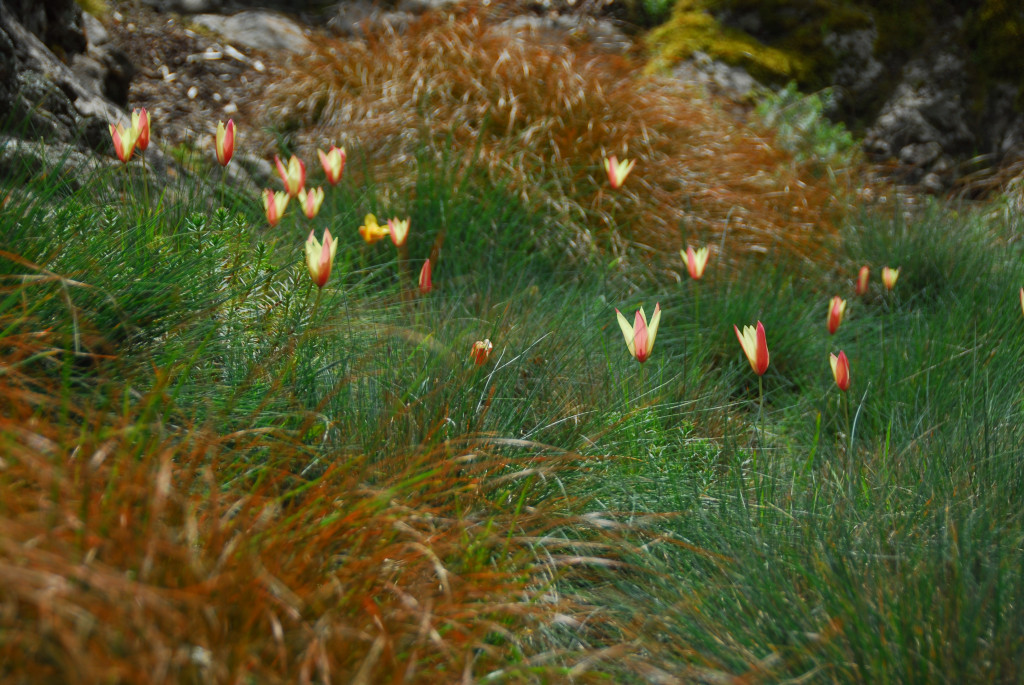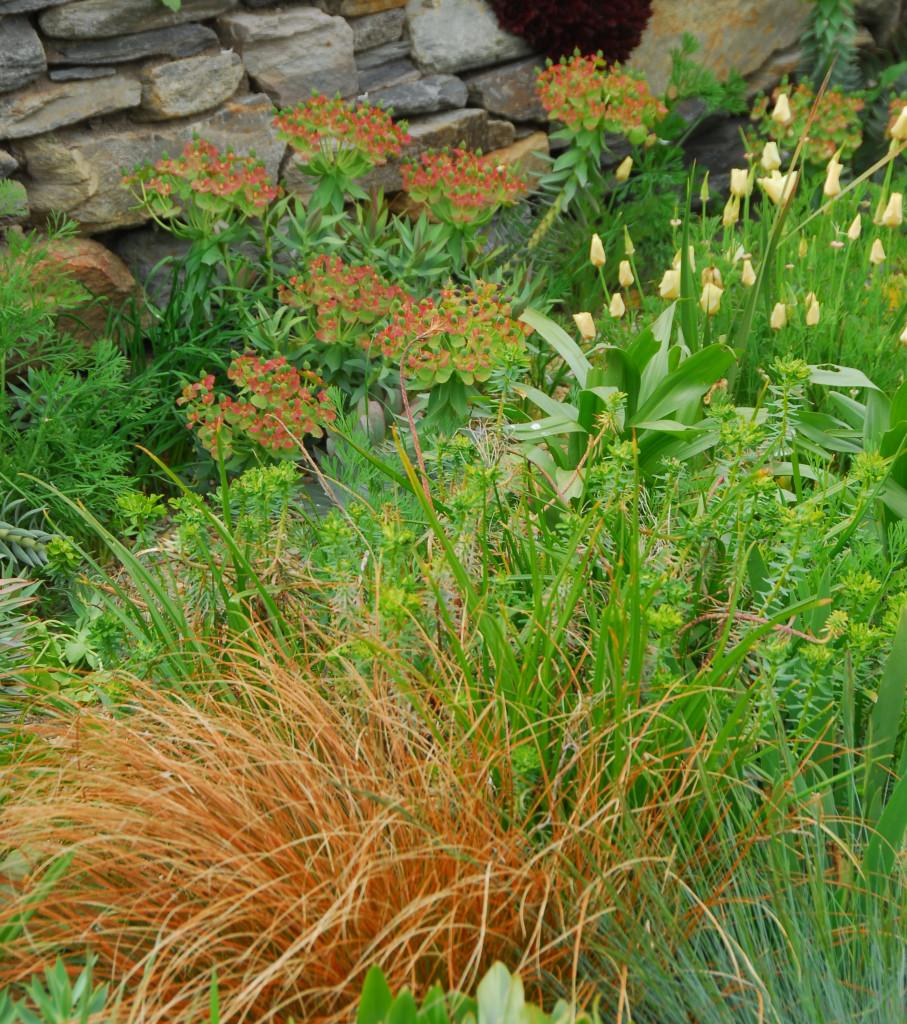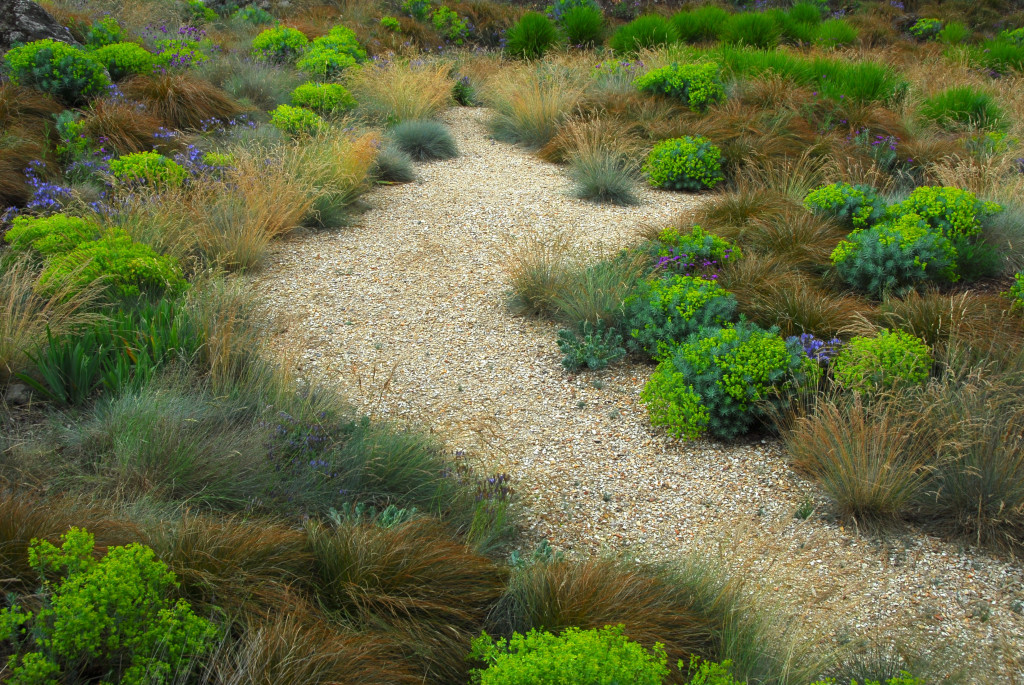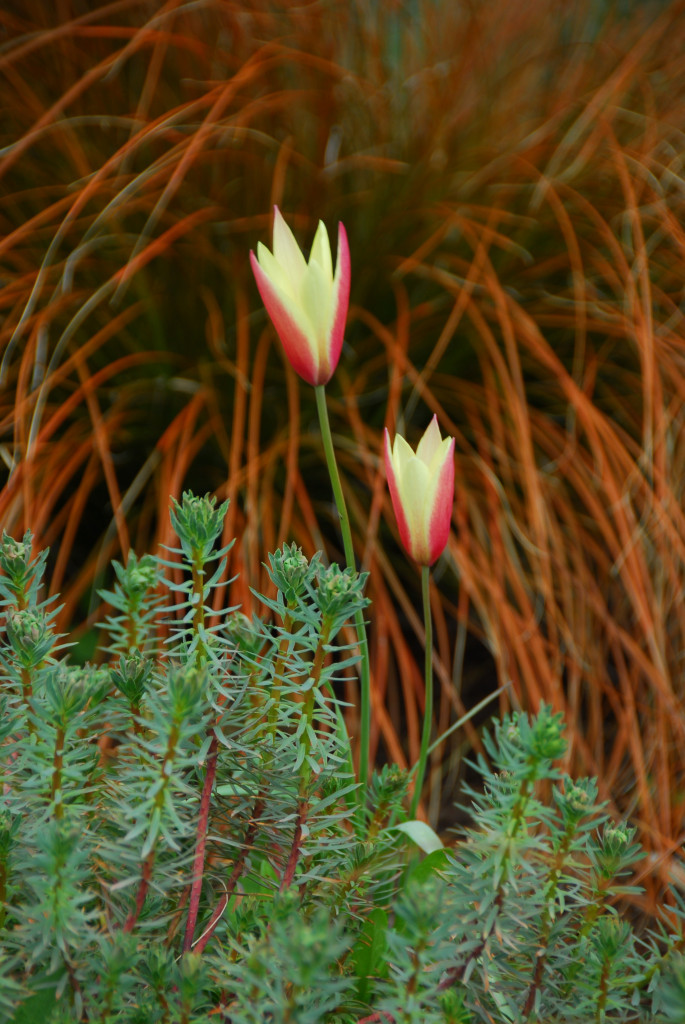If you’re a long-term reader of The Gardenist, you’ll know that I’m forever in two minds about evergreen grasses. Nearly everyone in a climate sufficiently moderate to grow the wide range of evergreen grasses available simply assumes their superiority over deciduous grasses, which tend (with exceptions) to come from colder climates. Why wouldn’t you (so the thinking goes) choose something with permanent presence in your garden over something that comes and goes with the seasons?
The reason nearly always falls back to long-term management. After a few years, most evergreen grasses end up congested with dead leaves, and don’t appreciate being hacked back to stumps in order to freshen them up. Deciduous grasses, on the other hand, are perfectly happy being cut to the ground each winter, so that every year they’re entirely refreshed with new green growth.

Having established that preamble, I want to look at something of an exception to the general rule. The orange sedge – Carex testacea.
Carex testacea is an evergreen bronze-orange sedge (which are grass-like plants, but not true grasses). It forms arching, domed mounds of fine foliage to about 60cm in height that shifts in colour with the seasons, and depending on its exposure to direct sun, from a very subtle bronze-olive in the warmer months, to a really lively (and sometimes quite startling) orange in the cold. The description of the orange as ‘lively’ is deliberate, in order to distinguish it from some the carexes that are so curiously brown, they look decidedly dead. Carex testacea, even when in full colour, looks nothing like this. It’s the colour of something fully alive, and singing. Loudly. And hence the use of the term ‘startling’. I’ve used it in a couple of settings in which I’ve been aiming for the modest bronze, and find it all a bit freakily bright over winter. But if I’m going to utilise a plant that’s too glamorous for it’s role, then that’s my own stupid fault. I can’t blame the carex.



The bronze-orange colouring does, however, go a long way to mask the inevitable slow accumulation of dead leaves. This is further minimised by the growth form in which new leaves tend to grow over the old (rather than through or among them, as is the case with so many evergreen grasses), so that most of the old dead leaves are hidden beneath the new.
There comes a time, however (as it does in the life of all evergreen grasses or grass-like plants) when the easiest way of dealing with them is to hoick them out and replace them, which is often further assisted by the growth of self-sown seedlings nearby, which are very tolerant of being transplanted. You can also divide up big old plants, though they are often slower and more erratic in their recovery than if replaced with young plants.

While most of the NZ carexes come from damp to wet areas, I’ve found Carex testacea to be incredibly drought tolerant. Here in Woodend on a west-facing slope in full sun it has very slowly petered out where it gets no water at all, but just a few waterings over summer will keep it very happy indeed.

Love this grass! And yes I’ve found it much more drought tolerant than I was led to believe. I’ve just used it as one of the ground cover grasses for a Japanese courtyard style design, against a very dark black/charcoal house. (The building material is some sort of fancy burnt wood. I can’t remember the name, it’s beautiful and matte so the almost shiny bronze grass should do well against it! I hope they’re not too much. It’s a cold climate so winter needs the warmth anyway. The trees are maples so will turn red and then drop their leaves allowing the grasses to take the stage through winter. That’s the plan anyway! Hope it still works through spring with the bright green growth on the trees. Thanks for the article! Love your work Michael.
I think it’ll look great against the black/charcoal house, Kate. Send us a pic!
After seeing your photos of this in my new garden I have planted some Carex testacea with some Euphorbia rigida. I have another Euphorbia on the property E. cyparissias Fen’s Ruby that I would like to plant with them.
I really like this Euphorbia, it is so soft and a lovely ground cover. It does spread quite a bit but only around the existing plants. I don’t see it coming up everywhere.